Our visit to Israel included an excursion to Bethlehem, which is in Palestine. Israeli passports are not accepted in Palestine and vice versa so Amir, who is Israeli, had to leave us on the Israeli side of the border. Then our van drove forward a few blocks and picked up our Palestinian guide on that side of the border. Amir told us that he has friends who live in Palestine, and they visit each other, even though it’s technically illegal. He added that there is no way he can do that with a group of tourists because he would be risking, not only his own safety, but ours as well.
The highlight of our time in Bethlehem was seeing the location of what is believed to have been the birthplace of Jesus Christ. The marker of the location is housed in the Church of the Nativity. Below is a photo of the sanctuary of that church. We were standing in line looking at this view. The church is not air-conditioned; the outdoor temperature was in the upper 90s; the building was crowded; and there was little air circulation. Lots of drinking water was required while we constantly wiped sweat off our faces. We were in line for over two hours and were told how lucky we were to be there in August. During the Christmas and Easter seasons, the line is 6-8 hours long. Well, it would probably be a little cooler then, but imagine standing in line for six or more hours!
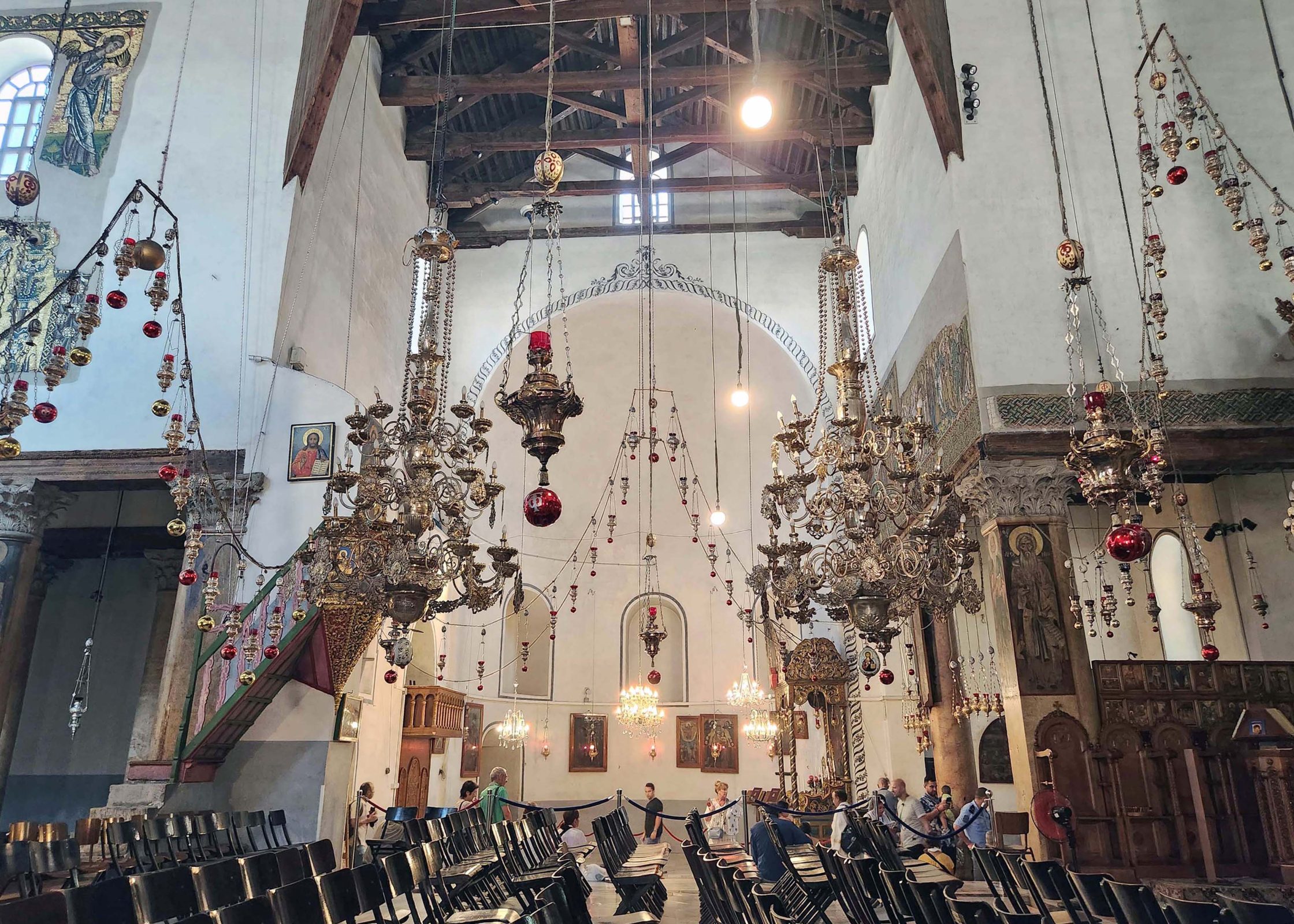
Israel and much of the Mediterranean world have been conquered by a variety of dynasties. Over time, conquerors plundered the 24-carat gold in the church’s murals and painted the walls black. Restoration has been in progress for 20 years, and it’s a slow process. The photo below shows one of the murals that is being restored.
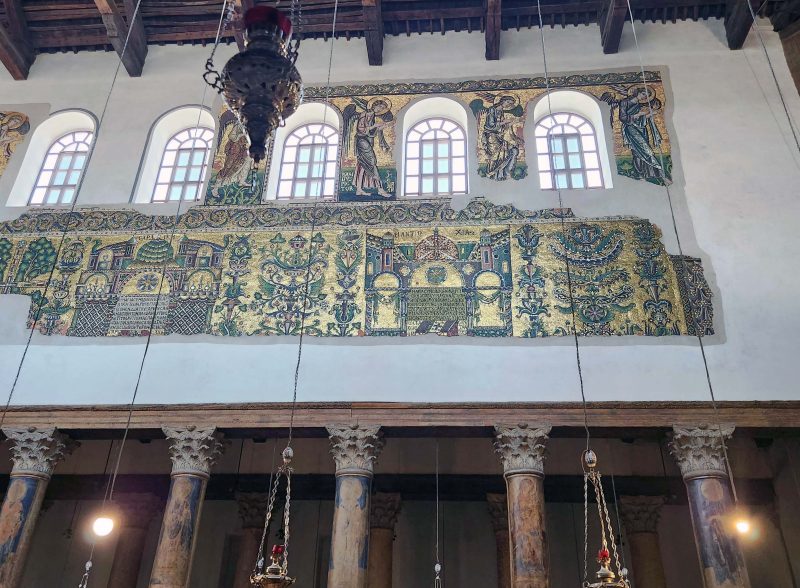
After an hour, we made it from the main sanctuary to a smaller room that was even hotter and even more crowded. It took another hour to inch our way through that room and to finally see the area that led to the site of Jesus’ birth. The icon shown below hung outside the door to the birthplace room (for lack of a better term). It is the only icon in which Mary is shown smiling. I think she deserves to smile; after all, she’s a new mother holding her baby!
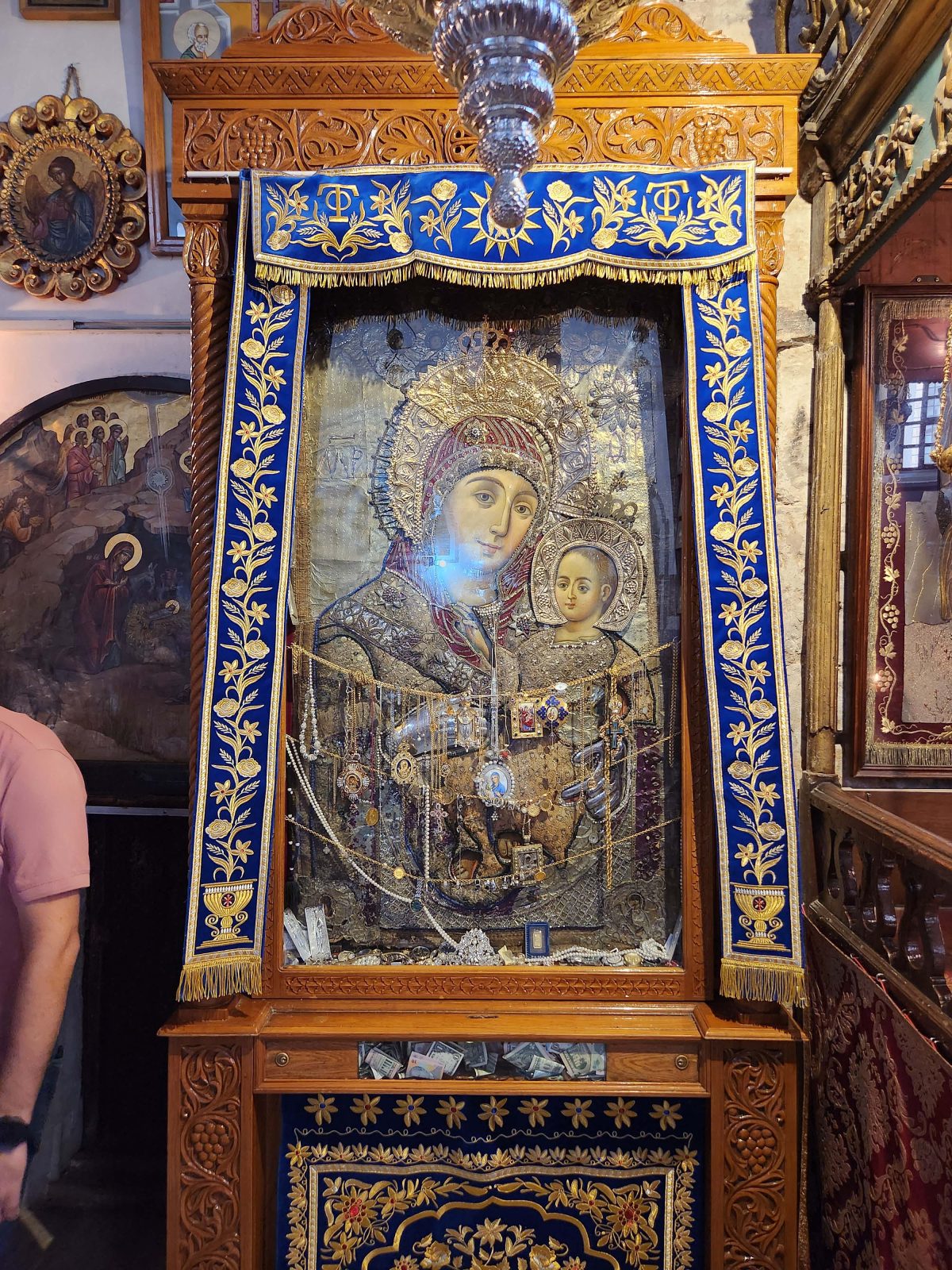
The entrance to the birthplace room is very low, requiring visitors to bend over in humility to enter the sacred place.
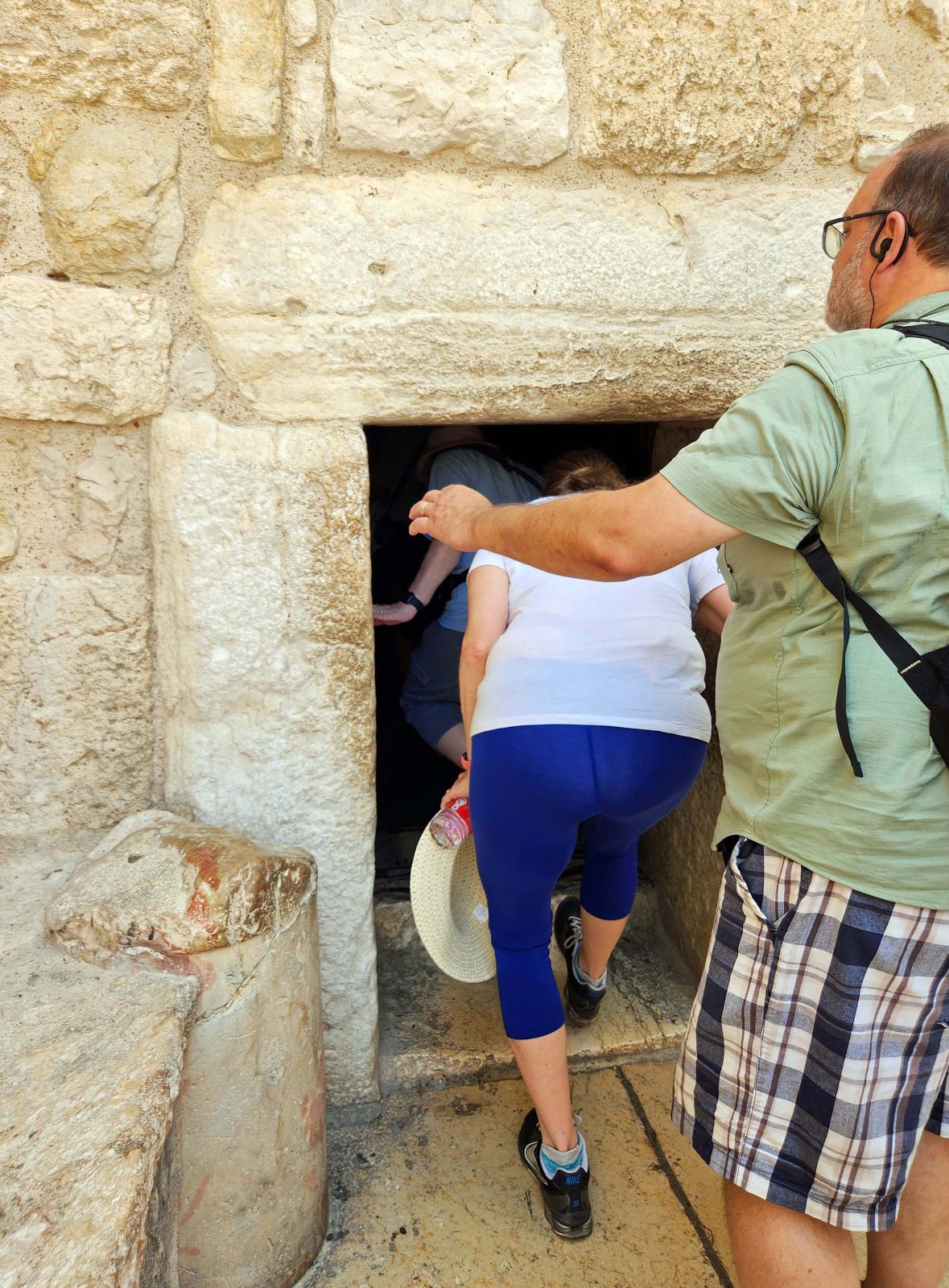
During the two hours it took us to get this far, we were told more than once that we would only be allowed time to kneel and to touch the star marking the place where Jesus is believed to have been born. That was not an exaggeration. Each visitor had roughly five seconds in front of the 14-point star before being asked to move on. Hours of waiting for a five-second peek! This photo shows the setting of the birthplace marker with our friend Pom kneeling for his allotted five seconds. The bearded man was our Palestinian guide. Part of his job was to keep the line moving.
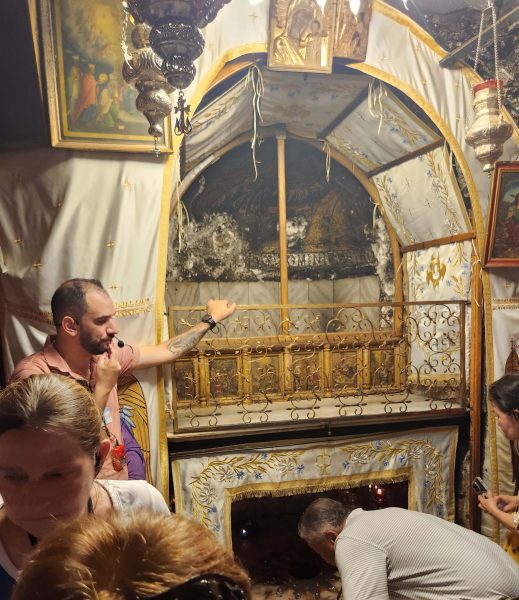
This is what Pom (and the rest of us) looked at. The 14-point Star of Bethlehem represents the 14 generations between Adam and Abraham, 14 more from Abraham to David, and 14 more from David to Jesus. It also represents the 14 Stations of the Cross.
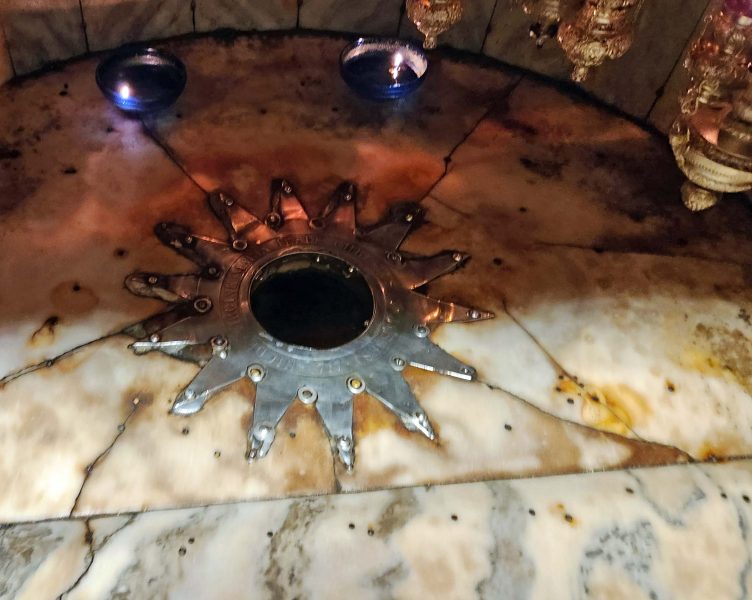
The next day, we toured with Amir in Jerusalem again and transitioned from Jesus’ birth to his crucifixion. Walking the Via Dolorosa (Sorrowful Way) is an important part of visiting Jerusalem. We walked the entire length of the 14 Stations of the Cross. It’s only about 2,000 feet, but it’s all uphill, and progress was very slow because of the crowds and the 14 stops. Do I need to mention that it was hot?–around 100 degrees again.
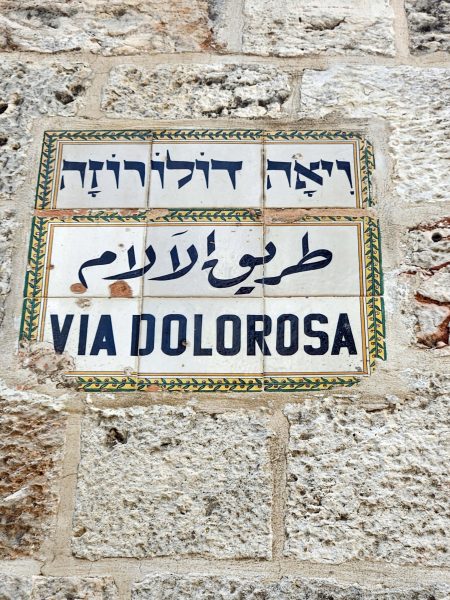
Station I is the point at which it is believed Jesus was sentenced to death; Station XIV is the point thought to be where Jesus was crucified and placed in the sepulcher. (Note: The difference between a tomb and a sepulcher is that a tomb is usually underground or in the basement of a building, while a sepulcher is a cave or is carved out of rock.)
The picture below shows Station III, marking where Jesus fell for the first time (see the stone carving above the doorway). Each station was marked in a similar manner.
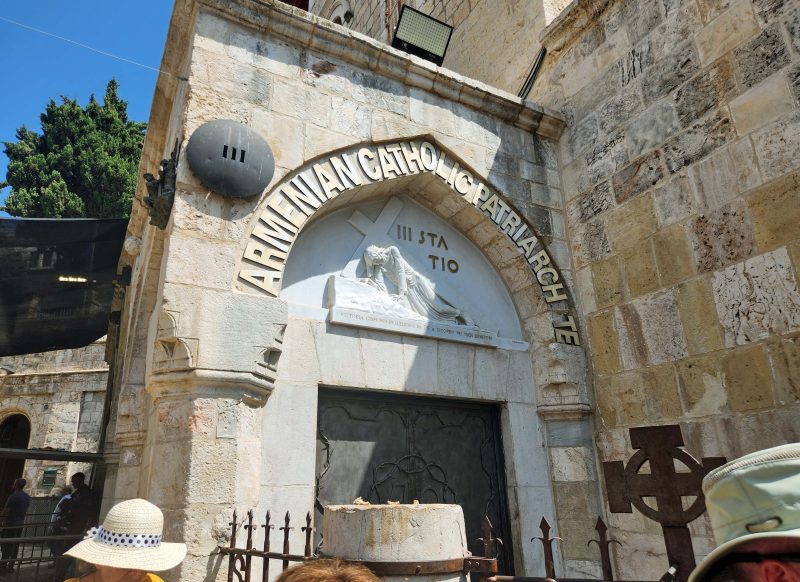
This is the Ecce Homo arch where, for centuries, scholars believed Jesus was whipped, crowned with thorns, and covered with a purple robe, then mocked by Pilate with the words, “Hail, the King of the Jews.” Archeologists, however, have found evidence that this arch did not exist until a century after Jesus’ trial and crucifixion; however, there is some evidence that a large plaza formerly existed beneath this area.
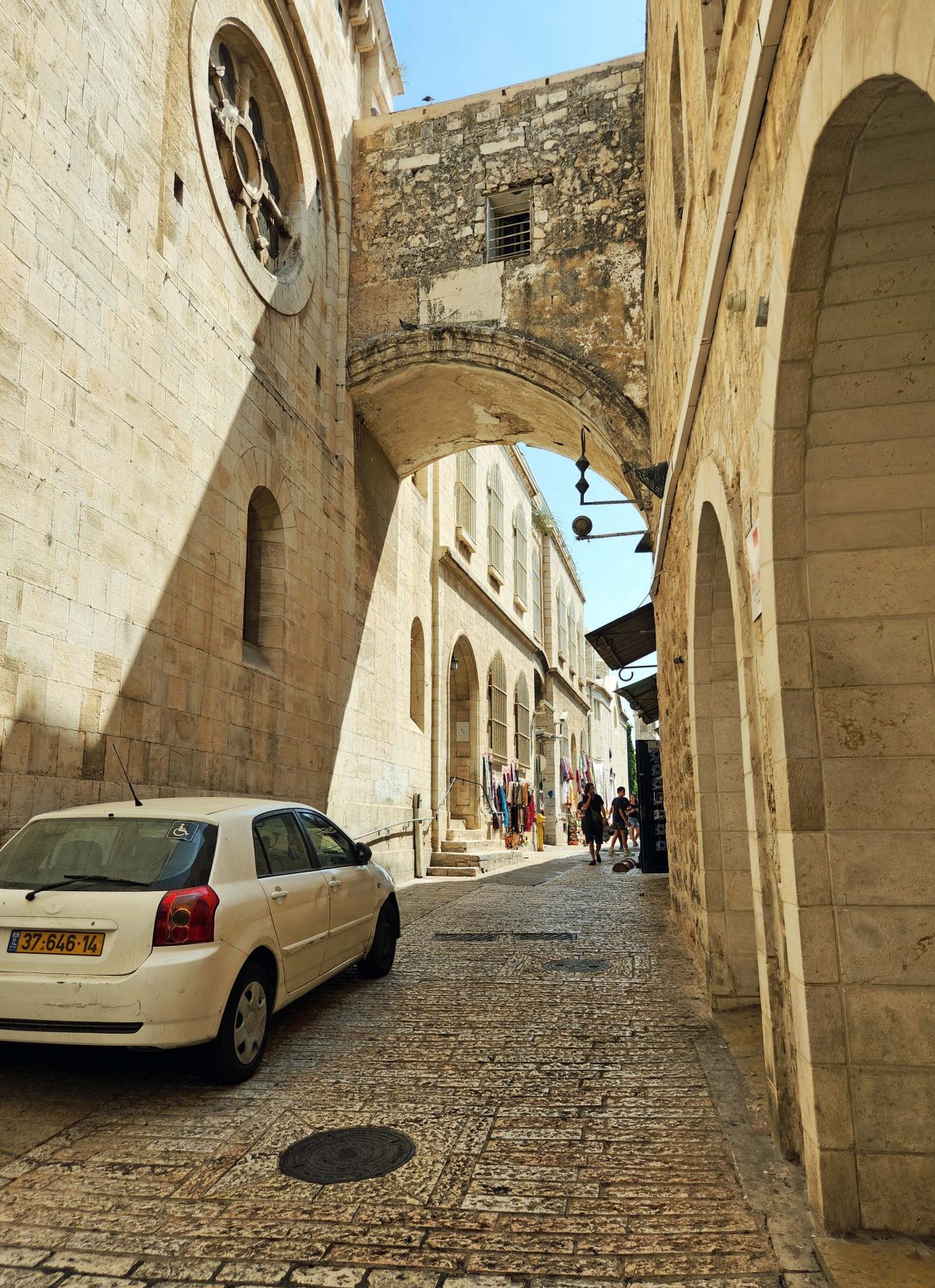
Station XIV, the last of the Stations of the Cross, is at the Church of the Holy Sepulchre and is named “Jesus is laid in the tomb.” The church is beautiful.
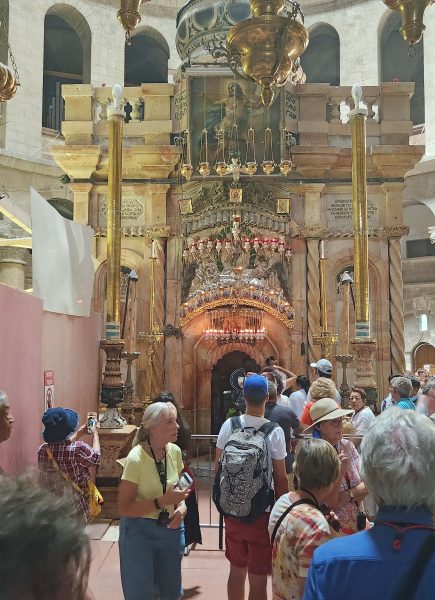
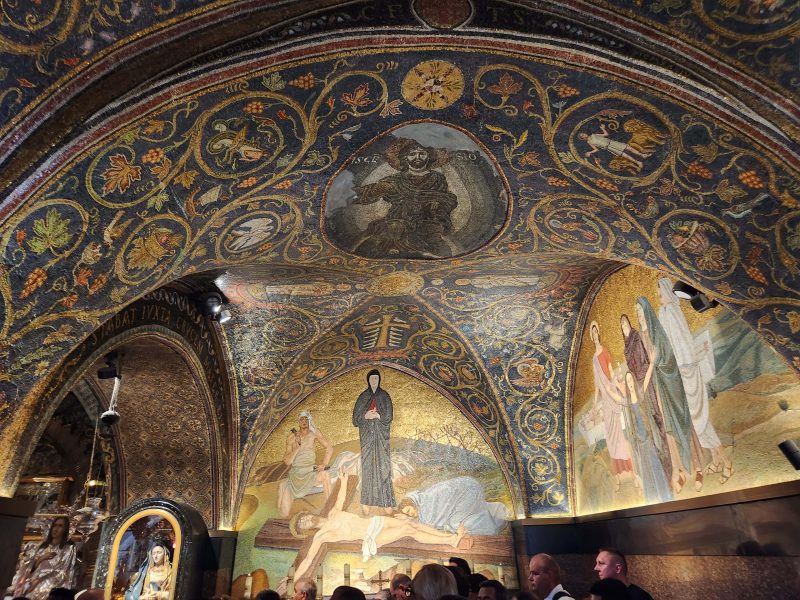
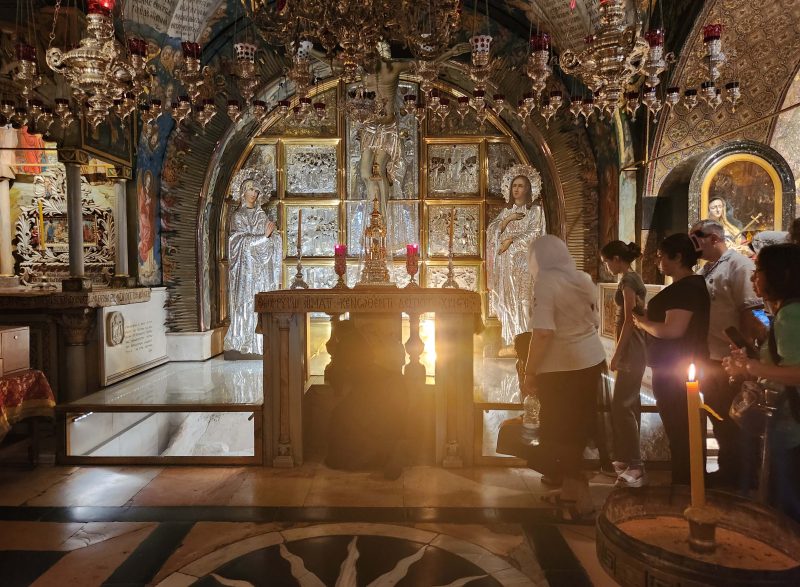
There is also a large mural in the church, showing (right to left) Jesus being taken down from the cross, being anointed, and being placed in the tomb. Note: the arrow indicates Amir, our Israeli guide.
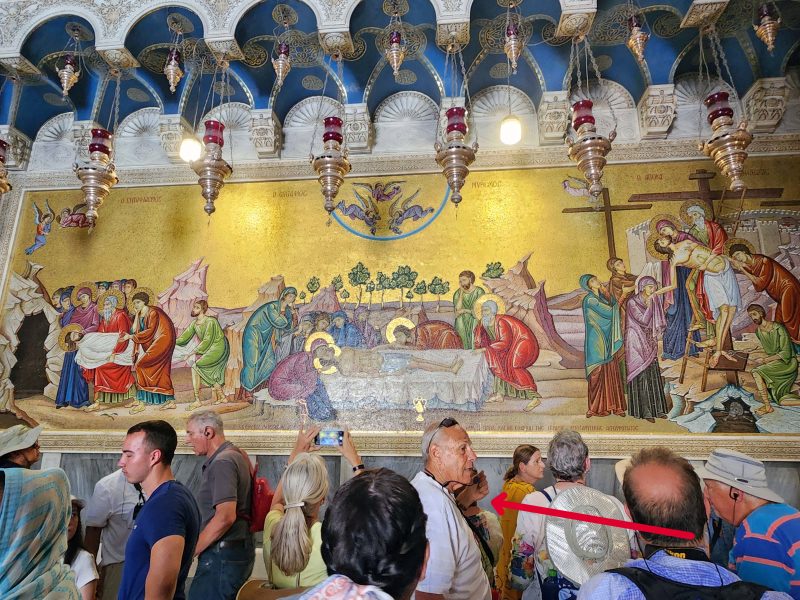
In addition to the time we spent visiting a variety of historical places in Jerusalem, we also had a lot of fun. Because our group of 22 people spent 8-10 hours together every day doing the same things, we got to know each other very well. Viking sponsored a group dinner at the hotel that was fun, and another evening, we went to a very nice restaurant with two other couples. There was also time to walk around the area near the hotel and to sit outside and visit with group members and other people. The Israel-Hamas war began seven days after Ted and I returned from our BT. We and other members of our group with whom we are keeping in touch are concerned about Amir and others that we met in Israel, and we hope they are all safe.
Tomorrow, we’ll fly from Tel Aviv to Cairo. I’m looking forward to cruising on the Nile River and to seeing the Great Pyramids and the Great Sphinx. We’ll be in Egypt for 12 days, so there will be many new things to see and to experience.
Note: As Ted and I walked around Jerusalem on our day-long tours, we noticed a lot of litter and no trash cans. That makes two things in which the U.S. excels: (1) we have very little litter in public areas; and (2) smoking has greatly decreased in the U.S., although it is still widespread in much of Europe. Cheers for us on these two counts.